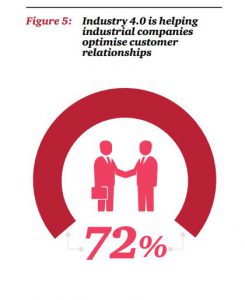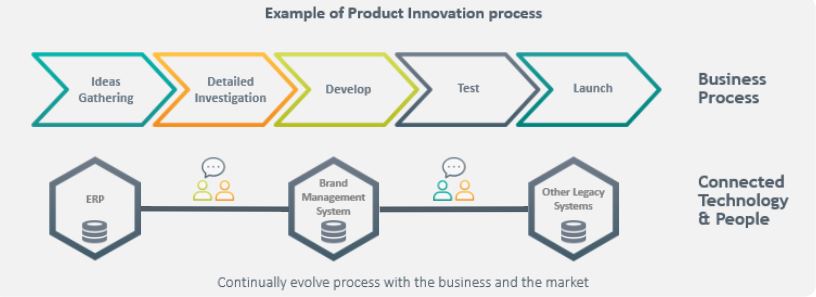Digitize Product Development to Accelerate Your Time-to-Market
Blog: Bizagi Blog
Adapt Quickly to Customer Trends with Faster Digital Product Development
“Digital product development means obsessing about customers.” says Forrester Research. “Organizations are undertaking digital transformation initiatives aimed at improving innovation and addressing rising customer expectations.” Manufacturers’ product development culture needs to respond and produce increasingly high-quality products whilst reducing time-to-market.
KPMG highlights that time-to-market is the new value driver for manufacturing businesses with technology underpinning all core processes. “Digital disruption has accelerated product lifecycles and significantly reduced barriers to entry in many industries. It is not uncommon for product lifecycles to be measured in months or even weeks, not years.”
In the age of Industry 4.0, there is a need for an open, innovative, and customer-focused product development culture. So digitizing and integrating your product development to speed up time-to-market is vital if you want to remain competitive.
Respond to your customer and your market
A customer-obsessed approach to product development is necessary because customer requirements are constantly changing. Manufacturers need to digitally transformation if they want to keep up with the ever-changing market. Creating great, innovative products that customers love requires you to develop an outside-in, customer-centric process that can react quickly to changing needs and incorporate customer and employee feedback.

According to PWC, nearly three-quarters of manufacturing companies (72%) expect that the use of data analytics will substantially improve customer relationships and customer intelligence along the product life cycle.
But processes often become linear and disconnected, making it difficult to adapt and change in line with changing market trends. By building your processes around a digital modeler, you can continually adapt workflows and build in new features such as IoT data, machine learning, and sensor technology as and when needed.
Having this kind of insight data can prove invaluable to manufacturers. “To generate these additional revenues, companies will introduce new industrial products with digital features and augment their existing portfolio,” says PWC in its report, Industry 4.0: Building the digital enterprise. “Digital services based on data analytics, or even complete digital solutions serving a customer ecosystem, will drive breakthrough revenue growth.”
With the dawn of IoT, product development teams in manufacturing, from product managers to engineers, will share responsibility for customer understanding and product experience throughout the product lifecycle, highlights Forrester in their report, The Internet Of Things Propels Product Development Into The Digital Era. Product usage data, as well as feedback from customers, sales, supply chain, and other roles can then be filtered back as continuous requirements inputs.
Connect your processes and systems
You may have systems such as a brand operating system, an ERP and other legacy systems that hold valuable information and need to be linked together. It’s likely that these may reside in separate processes to your product development process.
Many large manufacturing companies have had ERPs in place for 30 years or so. These systems may support vital information and processes, but they cannot gather, analyze or integrate the big data from IoT and sensors which deliver valuable information. Processes, systems and people then become siloed and cannot collaborate.

The process of product development soon starts to rely on big data collected from other processes and systems – such as employee feedback and product usage data in customer returns. Integrating these different processes with a wrap-around solution that connects legacy system and new technology helps to rapidly gather market requirements from employee, customer, retailer and other input-gathering processes. It can then analyze the information to reduce the time to launch the product.
“To succeed, companies will need to use data in predictive, forward-looking ways that make sense of market developments and customer behavior to improve products and develop new products and services,” says PWC.
For example, data from employee input can be fed into product innovation when carrying out their investigation and development. Then if an item is returned, this information can be re-accessed as part of the returns management process to ensure the same mistakes are not repeated.
Help your employees to collaborate
Many people need to be involved in a successful product launch – not just engineering and marketing. This includes marketing, sales, R&D, legal, support, suppliers, and customers. And everyone needs to work as quickly as possible to reduce time-to-market. Your current process can take a long time because people are not as connected as they could be. So, you need to remove internal silos in order to improve relationships and processes.
You can empower this cross-functional collaboration in the business by defining interactions between stakeholders, processes, and tools across product development. This will help employees to understand what the end goal is and work collaboratively towards creating the best possible product. Equally, time-to-market can be increased by the ease of communication and the automation of manual administrative tasks in the process.
“Isolation of roles is over”, says Charles Krueger, founder and CEO of BigLever. “We are actively trying to bring more and more reps into the room together to create a common language of product features as a foundation for their product line engineering strategy. During those first meetings, you almost need a referee in the room, but it’s part of breaking down the walls.”
How to digitize your product development
Bizagi helped a leading manufacturing company to improve their time-to-market and collaboration between key stakeholders by linking legacy, ERP and brand systems, connecting the people involved and linking previously linear processes.
They needed to connect the different people involved in product development but disparate processes meant to was difficult to get all the information needed. They created new workflow projects to enable better collaboration between people and processes with less manual steps in each process to save time. This seamlessly integrated with the established brand management system and SAP.
The project resulted in a reduced time-to-market for product releases and improved input for more stakeholders. The company can now draw more value from their legacy systems and the less linear process means that they are set up to adapt to future challenges.
Visit our website to find out more about our work with manufacturing companies and how the Bizagi platform can add a layer of agility to your existing systems and connect all departments to enhance your product development in line with customer needs and reduce time-to-market.
If you’d like to find out more about how Bizagi is helping businesses to accelerate their digital transformation initiatives, why not register for our global community conference on October 16-18, Bizagi Catalyst 18.
This event will bring together a range of inspirational speakers, leading industry analysts, successful business leaders and Bizagi experts. We’re especially excited to have the multi-talented Guy Kawasaki joining us. Click here to find out more about the exciting agenda and beautiful Miami venue.
The post Digitize Product Development to Accelerate Your Time-to-Market appeared first on Bizagi Blog – Ideas for Delivering Digital Transformation.
Leave a Comment
You must be logged in to post a comment.








